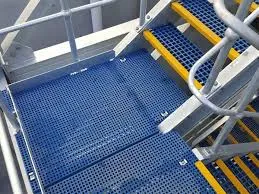
-
 Afrikaans
Afrikaans -
 Albanian
Albanian -
 Amharic
Amharic -
 Arabic
Arabic -
 Armenian
Armenian -
 Azerbaijani
Azerbaijani -
 Basque
Basque -
 Belarusian
Belarusian -
 Bengali
Bengali -
 Bosnian
Bosnian -
 Bulgarian
Bulgarian -
 Catalan
Catalan -
 Cebuano
Cebuano -
 China
China -
 China (Taiwan)
China (Taiwan) -
 Corsican
Corsican -
 Croatian
Croatian -
 Czech
Czech -
 Danish
Danish -
 Dutch
Dutch -
 English
English -
 Esperanto
Esperanto -
 Estonian
Estonian -
 Finnish
Finnish -
 French
French -
 Frisian
Frisian -
 Galician
Galician -
 Georgian
Georgian -
 German
German -
 Greek
Greek -
 Gujarati
Gujarati -
 Haitian Creole
Haitian Creole -
 hausa
hausa -
 hawaiian
hawaiian -
 Hebrew
Hebrew -
 Hindi
Hindi -
 Miao
Miao -
 Hungarian
Hungarian -
 Icelandic
Icelandic -
 igbo
igbo -
 Indonesian
Indonesian -
 irish
irish -
 Italian
Italian -
 Japanese
Japanese -
 Javanese
Javanese -
 Kannada
Kannada -
 kazakh
kazakh -
 Khmer
Khmer -
 Rwandese
Rwandese -
 Korean
Korean -
 Kurdish
Kurdish -
 Kyrgyz
Kyrgyz -
 Lao
Lao -
 Latin
Latin -
 Latvian
Latvian -
 Lithuanian
Lithuanian -
 Luxembourgish
Luxembourgish -
 Macedonian
Macedonian -
 Malgashi
Malgashi -
 Malay
Malay -
 Malayalam
Malayalam -
 Maltese
Maltese -
 Maori
Maori -
 Marathi
Marathi -
 Mongolian
Mongolian -
 Myanmar
Myanmar -
 Nepali
Nepali -
 Norwegian
Norwegian -
 Norwegian
Norwegian -
 Occitan
Occitan -
 Pashto
Pashto -
 Persian
Persian -
 Polish
Polish -
 Portuguese
Portuguese -
 Punjabi
Punjabi -
 Romanian
Romanian -
 Russian
Russian -
 Samoan
Samoan -
 Scottish Gaelic
Scottish Gaelic -
 Serbian
Serbian -
 Sesotho
Sesotho -
 Shona
Shona -
 Sindhi
Sindhi -
 Sinhala
Sinhala -
 Slovak
Slovak -
 Slovenian
Slovenian -
 Somali
Somali -
 Spanish
Spanish -
 Sundanese
Sundanese -
 Swahili
Swahili -
 Swedish
Swedish -
 Tagalog
Tagalog -
 Tajik
Tajik -
 Tamil
Tamil -
 Tatar
Tatar -
 Telugu
Telugu -
 Thai
Thai -
 Turkish
Turkish -
 Turkmen
Turkmen -
 Ukrainian
Ukrainian -
 Urdu
Urdu -
 Uighur
Uighur -
 Uzbek
Uzbek -
 Vietnamese
Vietnamese -
 Welsh
Welsh -
 Bantu
Bantu -
 Yiddish
Yiddish -
 Yoruba
Yoruba -
 Zulu
Zulu
Exploring the Latest Innovations in GRP Composite Materials for Automotive Body Manufacturing
The Evolution and Importance of GRP Car Bodies
Glass Reinforced Plastic (GRP), often referred to as fiberglass, has transformed the automotive industry by providing a lightweight yet robust alternative to traditional materials used in car manufacturing. The evolution of GRP car bodies can be traced back to the mid-20th century, when manufacturers began to explore composite materials to enhance vehicle performance and aesthetics. This article delves into the benefits, applications, and future of GRP in car body construction.
One of the primary advantages of GRP is its impressive strength-to-weight ratio. Weighing significantly less than steel, GRP helps improve fuel efficiency and overall vehicle performance without compromising safety. The lightness of GRP allows for more flexible design options, enabling manufacturers to create sleek, aerodynamic body shapes that enhance performance on the road. This is particularly beneficial in industries where speed and agility are paramount, such as in sports cars and high-performance vehicles.
The Evolution and Importance of GRP Car Bodies
In addition to its functional benefits, GRP offers aesthetic flexibility that traditional materials cannot match. It can be easily molded into complex shapes and can be finished in a variety of textures and colors. This versatility allows automotive designers to innovate and create visually striking models that stand out in a crowded market. Customization options have also expanded, as GRP can be painted or coated to achieve different finishes from glossy to matte, catering to the personal tastes of consumers.
grp car body

GRP is also increasingly used in electric vehicles (EVs) and hybrids, where weight reduction is critical to enhancing battery range and efficiency. As the automotive industry shifts towards sustainable solutions, the use of lightweight materials like GRP can contribute significantly to reducing the carbon footprint of manufacturing processes. Furthermore, GRP can be produced from recyclable materials, aligning with the environmental goals that many manufacturers are striving to achieve.
Despite the numerous advantages of GRP, there are challenges that manufacturers must address. The production of GRP can be more time-consuming and costly than traditional materials, particularly in the initial molding processes. Additionally, while GRP has excellent mechanical properties, it may not match the impact resistance of metals in certain situations, leading to ongoing research and development aimed at enhancing its properties.
Looking towards the future, the potential for GRP in the automotive industry seems promising. As advancements in technology improve the manufacturing processes and materials science evolves, we may see even lighter and more durable composites entering the market. Research into bio-based and sustainable composite materials continues, suggesting that GRP could play a crucial role in green vehicle design.
In conclusion, GRP has significantly impacted the automotive industry, providing a durable, lightweight, and aesthetically appealing alternative to traditional car body materials. Its advantages in fuel efficiency, corrosion resistance, and design flexibility make it a compelling choice for manufacturers. As development continues in this field, we may witness an even broader adoption of GRP and similar materials that pave the way for the cars of tomorrow, aligning with sustainable practices and innovative designs that cater to a changing market. The integration of GRP into automotive applications is not just a trend; it represents a crucial shift in how vehicles can be engineered for performance, style, and sustainability.
Latest news
-
Exploring the Benefits of Top Hammer Drifter Rods for Enhanced Drilling PerformanceNewsJun.10,2025
-
High-Precision Fiberglass Winding Machine for GRP/FRP Pipe Production – Reliable & Efficient SolutionsNewsJun.10,2025
-
FRP Pipes & Fittings for Shipbuilding - Corrosion-Resistant & LightweightNewsJun.09,2025
-
Premium FRP Flooring Solutions Durable & Slip-ResistantNewsJun.09,2025
-
Premium Fiberglass Rectangular Tanks Durable & Lightweight SolutionNewsJun.09,2025
-
Tapered Drill String Design Guide Durable Performance & UsesNewsJun.09,2025









